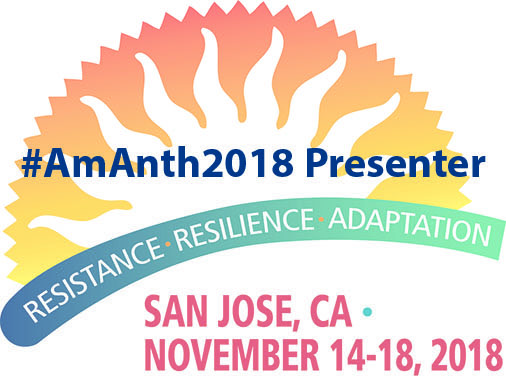
Indexing Indigeneity in Taiwan: Resistance and Adaptation in Taiwanese Visual Culture
- Cosponsored by the Society for Visual Anthropology and the Society for East Asian Anthropology
- Panelists: Skaya Siku, Futuru C.L. Tsai, P. Kerim Friedman, Tzu Tung Lee, Eliana Ritts, Darryl Sterk
- Discussant: Marc L. Moskowitz
Date and Time
- Friday, November 16, 2018
- 10:15 AM - 12:00 PM
Session Abstract:
Taiwanese indigenous cultures have survived settler violence during the Qing, colonial occupation under the Japanese, forced assimilation under Nationalist (KMT) martial law, and the commodification of their cultures in an era of globalization. This amazing resilience is a product of both resistance and adaptation. This panel looks at these strategies through the lens of indigenous visual culture, including papers on fine art, documentary and feature film, television, and livestreaming on social media. Drawing on work in linguistic anthropology, these papers explore the wide variety of ways in which indigenous identities have been indexed (Silverstein 2003) through visual representation as well as the language in which those representations are embedded. Taiwanese indigeneity has played an increasingly iconic role in debates over Taiwanese national identity. Accordingly, these papers explore the shifting chronotopes (Bakhtin 1981) of indigeneity at work focus has shifted from more recent immigration to Taiwan (by Chinese settlers) to ancient migrations out of Taiwan (by Austronesian explorers). Within the larger framework of Taiwan’s shifting chronotopes, the six papers on this panel further tackle issues relating to the production, dissemination, and language of indigenous visual media in Taiwan. Two of the papers (Ritts and Tsai) explore the aesthetic choices made in the production process. Ritts asks what it means to make “slow TV” on Taiwan’s indigenous television station, while Tsai explores his own use of sensory ethnography in documenting ‘Amis spearfishing practices. Two of the papers (Friedman and Siku) explore the dissemination of documentary films by and about indigenous Taiwanese. Friedman explores the shifting chronotopes of ethnographic films over the history of the Taiwan International Ethnographic Film Festival (TIEFF), while Siku looks at how one indigenous filmmaker and activist, Mayaw Biho, has been making use of video livestreaming. The last two papers (Sterk and Lee) both look at the role of language in visual culture. Sterk explores the role of endangered languages in feature films, as well as how those films are interpreted by indigenous audiences, while Lee explores the shifting linguistic framing of indigenous art works for exhibition audiences. Although focused on Taiwan, these papers ask fundamental questions about indigeneity and visual culture while making innovative use of theoretical paradigms drawn from linguistic anthropology.